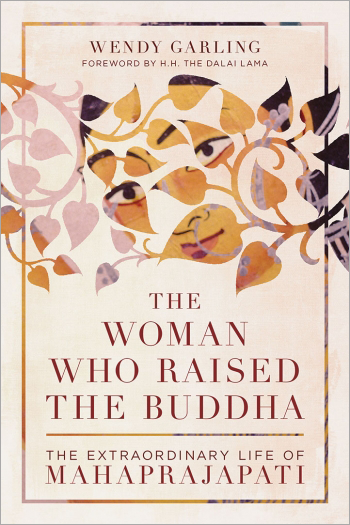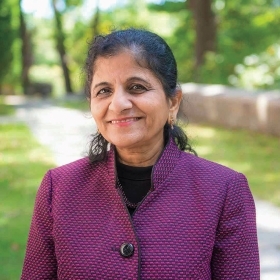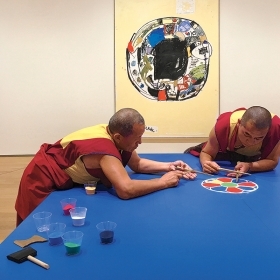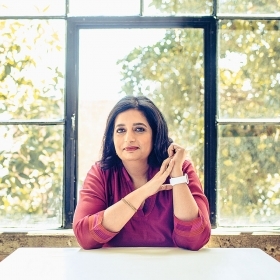What was the Buddha’s mother like, and why have the details of her life been largely lost to history? In this winning biography, researcher Wendy Garling ’73 introduces readers to Mahaprajapati, who was the Buddha’s biological aunt, stepmother, and adoptive mother.
When the Buddha’s biological mother died seven days after giving birth to him, her sister Mahaprajapati stepped in to raise him. But Mahaprajapati’s contribution to early Buddhism didn’t end with her early maternal influence on the religion’s founder. Much of the book is taken up with stories about her own quest for enlightenment and her founding of the first monastic order for women, battling sexism again and again along the way.
Two aspects of the author’s own biography join together in this book. First, Garling has a master’s degree in Sanskrit language and literature from the University of California at Berkeley and is the author of the 2016 book Stars at Dawn: Forgotten Stories of Women in the Buddha’s Life. In addition, she is a Tibetan Buddhist practitioner who has studied with the Dalai Lama (who provides one of the book’s two forewords) and traveled on pilgrimage to sacred sites in Tibet and India. Both of those identities—the scholar and the devotee—are apparent in this book, and they generally coexist quite well together.
Garling’s writing is clearly informed by deep primary-source research into Buddhist texts from across Asia. Part of the joy of the book is the way she weaves together story after story—this one from Thailand, that one from Myanmar or Tibet—to piece together Mahaprajapati’s life. She asks the reader to think creatively about these stories.
She also draws on nontextual sources, such as art, because some texts have been altered over time in ways that erase women from the story. “That we know so little about a figure as central in importance to early Buddhism as Mahaprajapati suggests that she was a target of … early misogynistic editorial treatment,” she writes. “It’s fortunate indeed that we have early Buddhist art to serve as a counterpoint, if not a corrective, to literary narratives. Unlike written records generated more or less contemporaneously, artistic images—some literally chiseled in stone—could not be altered or redacted over time to suit Buddhism’s evolving androcentrism.”
Garling’s writing is accessible, even funny. “Early soft porn!” she quips after recounting one particularly juicy tale of passion. On the other hand, her asides can just as often call attention to the dark side of life 2,500 years ago. “Absolutely a hard read,” she notes about a terrible story about child abuse and infanticide. Throughout, her authorial voice is strong, guiding the reader through the life of a woman she obviously admires and is determined to rescue from relative obscurity, even at the risk of dipping at times into hagiography.
Despite this focus on the individual, one of the main points of the book is that enlightenment for Mahaprajapati was not a solitary affair. Rather, she traveled that road with 500 other women, all achieving nirvana collectively. “Contemporary accounts tend to spotlight Mahaprajapati’s leadership role while overlooking the shared vision and voice of the multitude of women in her company,” Garling observes.
Garling estimates that Mahaprajapati was likely in her late 60s when she requested ordination, and that she lived into her 90s, even though various texts credit her as dying at age 120 (and still being capable of sitting in full lotus position!). However many years she lived, her legacy is clearly vital for a new generation of Buddhist women, both ordained and laity, who seek her strength and wisdom.
Riess is a senior columnist for Religion News Service and has a Ph.D. in American religious history from Columbia University.








We ask that those who engage in Wellesley magazine's online community act with honesty, integrity, and respect. (Remember the honor code, alums?) We reserve the right to remove comments by impersonators or comments that are not civil and relevant to the subject at hand. By posting here, you are permitting Wellesley magazine to edit and republish your comment in all media. Please remember that all posts are public.